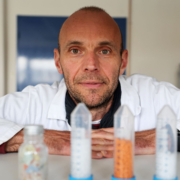Copyright : Laboratoire LEMAR- 2018
Anne Lorrain
Fonds Pacifique
Start Date
03/04/2025
End Date
03/04/2025
Marine pelagic top predators such as tuna are species of ecological, commercial and health interest that are under threat from fishing, habitat degradation and climate change. Due to their position at the top of the food web and their relatively long life cycle, they are particularly exposed to chemical contaminants that bioaccumulate in their tissues and biomagnify in food webs. The main objectives of the project are to provide knowledge on the bioaccumulation of Persistent Organic Pollutants (POPs) and the presence of plastics and plastic additives in tuna from the South Pacific (New Caledonia and Papua New Guinea), thus contributing to the assessment of human exposure to these contaminants through the diet of seafood products with a view to making health recommendations for the populations concerned. The fatty acid composition (omega 3) of these tuna will also be evaluated to better understand the nutritional quality of these muscles. The results provided will fill the data gap on this subject and will allow a better knowledge and management of fisheries resources.
The specific objectives are to
i) Determine the levels and profiles of POP contamination in tuna;
ii) Determine and characterize the presence of plastics in the stomachs and muscles of tuna;
iii) To have an initial state of chemical and plastic contamination for monitoring over time.
Laboratory Members
Contributors
Communauté du Pacifique – CPS, Nouméa (V. Allain, E. Vourey, A. Portal),
Ifremer LBCO Nantes (C. Munschy),
SOS Seychelles, (N. Bodin),
CSIRO Hobart (H. Pethybridge)












